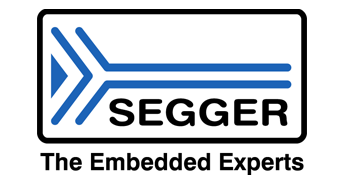Vision Processing
Cameras in vehicles are becoming increasingly common and play a crucial role in modern automotive technology. They are used for various purposes, including safety, convenience, and advanced driver-assistance systems (ADAS) spanning various applications from rearview cameras, lane departure warning, in-cabin occupant monitoring systems, and more.
indie’s proprietary image signal processing technology and industry-leading eWarp© enable these emerging safety features, reduce total system costs, and provide advanced camera functionality for interior and exterior applications.
New Product
iND880: Class-leading Computer Vision Processor
Proprietary ISP
Automotive-optimized multi-sensor ISP with 1400MP/s throughput, ultra-low ~1ms end-to-end latency, and versatile color filter array support, delivering 144dB high dynamic range.
Proprietary eWarp® engine
Real-time in-line image dewarping with flexible correction modes, eliminating the need for frame buffers.
Low-power
This low-power chip, fabricated using a 16 nm process, is specifically designed for edge computing applications with a typical power consumption of approximately 1 watt.
Safety
Engineered to comply with ASIL-B safety standards, incorporating robust features and comprehensive documentation for risk mitigation in automotive systems.
Security
A dedicated hardware security module (HSM) with crypto accelerators ensures the secure execution of critical cybersecurity functions.

2024 Auto Sensor
Innovation of the Year
The 2024 Auto Sensor Innovation of the Year was awarded by AutoTech Breakthrough, a leading market intelligence organization.
Vision Processing Solutions
| Product Number | Description | |
|---|---|---|
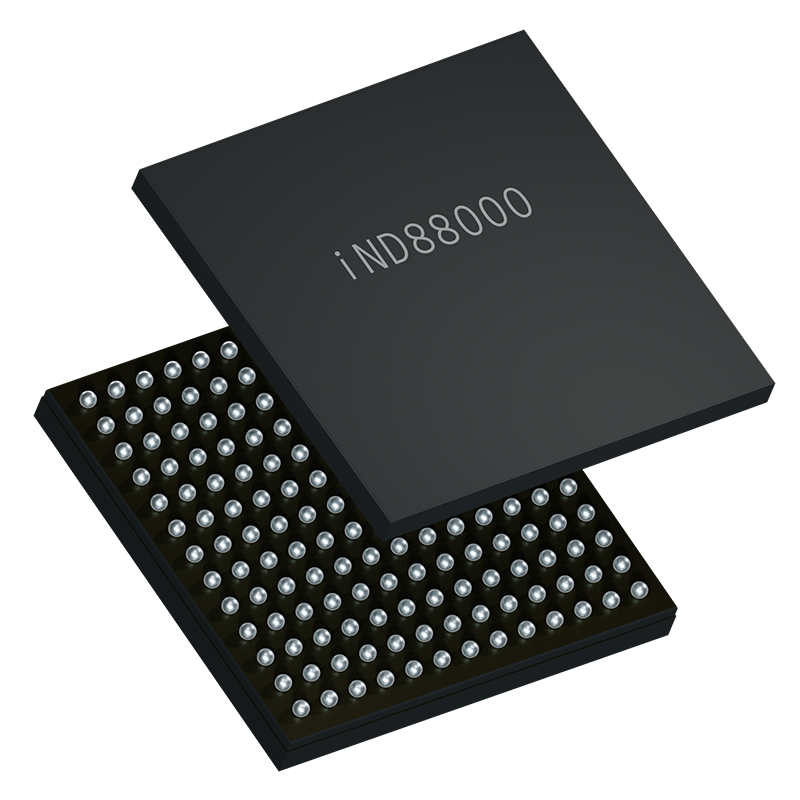 iND880 iND880 | Camera Video Processor: 4 cameras and 8 video streams, 1400 MPixel/sec, 144 dB HDR, cybersecurity, ASIL-B | View Product |
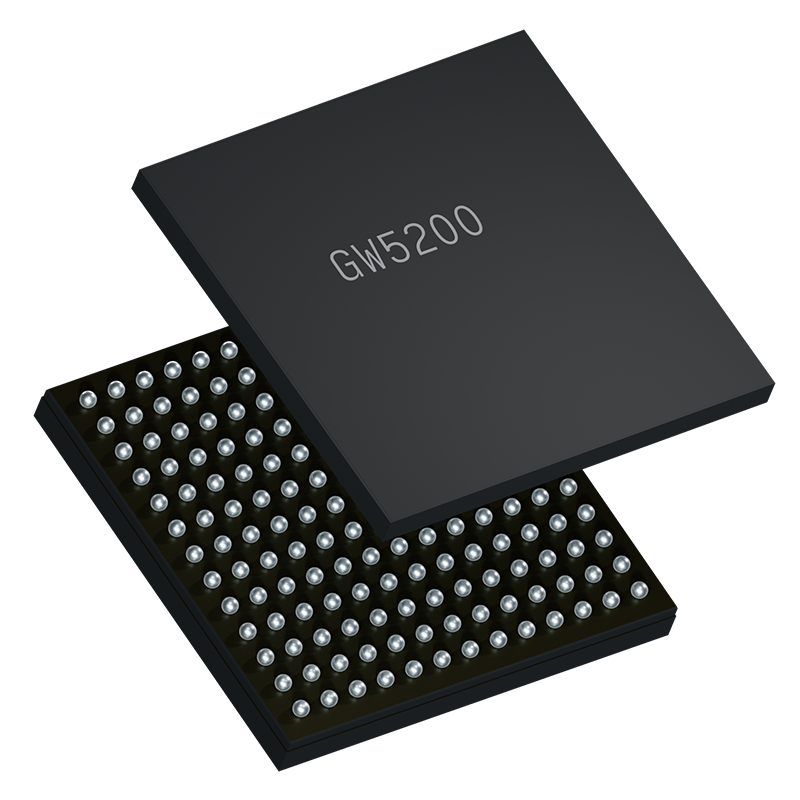 GW5 GW5 | Camera Video Processor: 8MP, RGB-IR, 120 dB HDR, ASIL-B | View Product |
 GW4 GW4 | Camera Video Processor: analog and digital output, 2 MP | View Product |
Evaluation Kits
indie offers Evaluation Kits (EVKs) for our Camera Video Processors (CVPs), to accelerate development through rapid prototyping and performance evaluation. For more information, please contact our sales department [email protected].

iND880 EVK
Applications
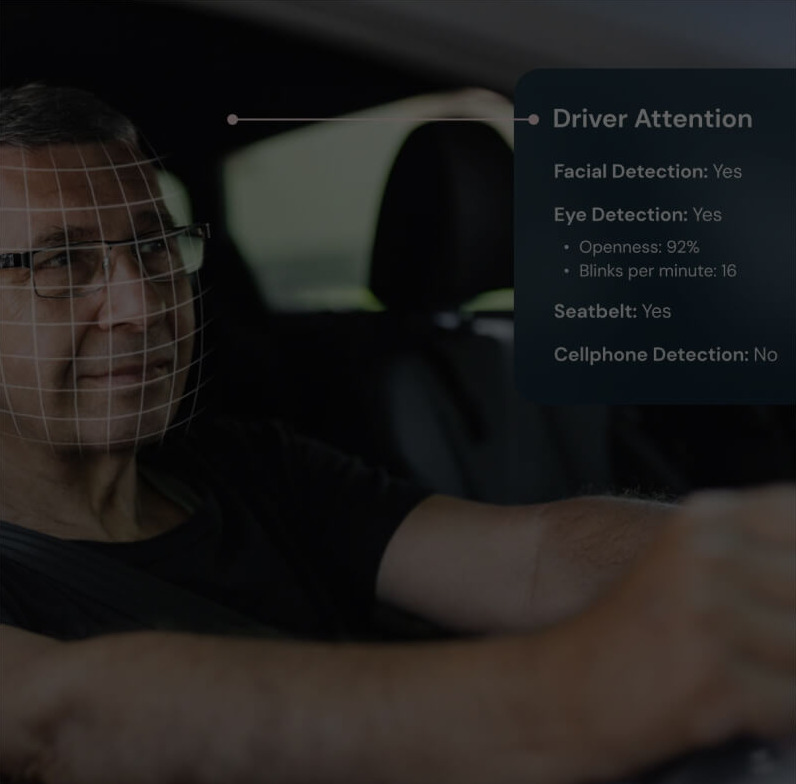
In-Cabin: Driver/Occupant Monitoring Systems (DMS/OMS)
OMS/DMS use multimodal sensing and camara-based vision to assess driver alertness, monitor occupant behavior, ensure safety, enable personalized features, and enhance in-cabin experiences.

Electronic Mirrors
Replacing traditional mirrors indie’s image processing solutions offer ultra-low latency and dewarped fields of view to enable drivers with a clear, unobstructed, panoramic rearward view.

Camera Monitor Systems (CMS)
Blending multiple cameras and displays, our solutions offer improved visibility, reduced blind spots, enhanced safety, and better aerodynamics for modern vehicles.

ADAS
indie’s high-throughput, low-latency image signal processing technology and industry-leading eWarp® enable emerging ADAS safety features, reduce total system costs, and provide advanced camera functionality for interior and exterior applications.
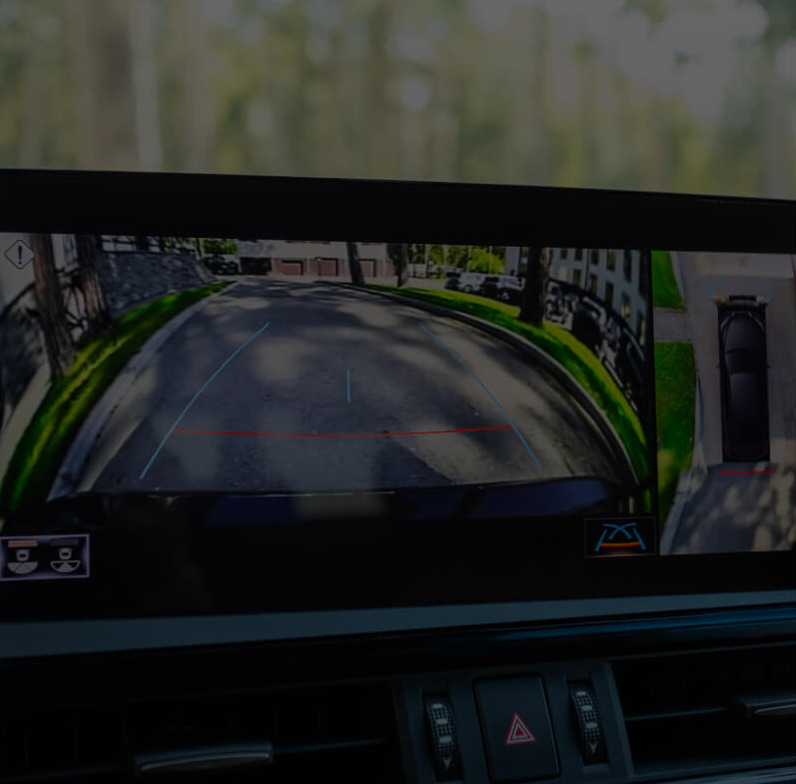
Surround View System
Our ISP processing solutions support multiple ultra-wide-angle cameras and advanced image stitching algorithms to deliver a seamless 360-degree top-down view, enhancing vehicle maneuverability and situational awareness.
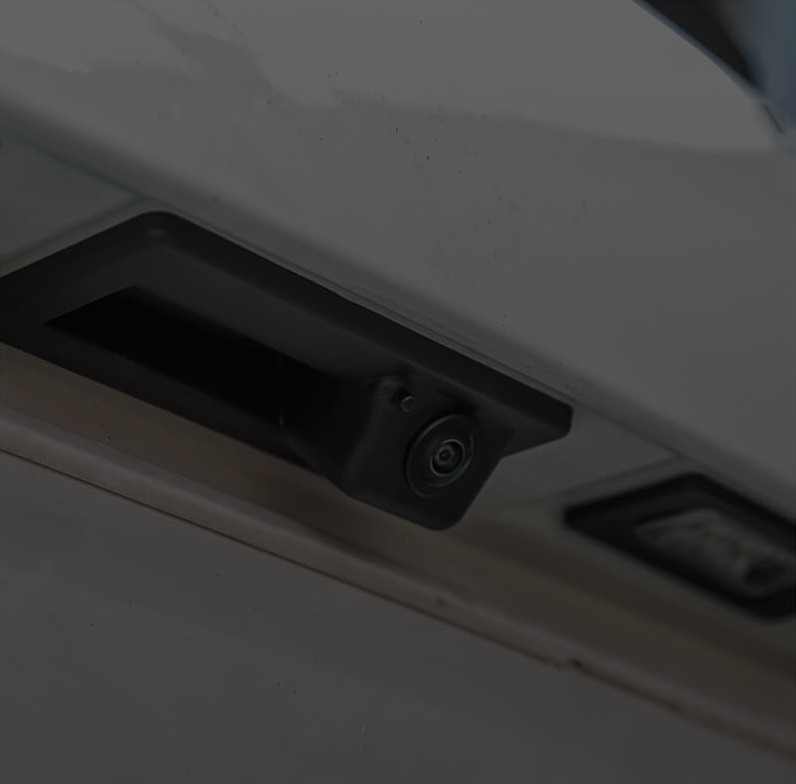
Rearview Camera System
Utilizing our proprietary eWarp technology, indie offers industry-leading distortion correction, creating a clear, ultrawide FOV with no blind spots. In addition, indie’s products include advanced graphics to provide dynamic overlays for parking assist.

Robotics
Superior HDR and low-light image processing allows for precise navigation, and object and obstacle detection for computer vision and AI-based applications such as AMRs/AGVs and humanoids.

Industrial
DRAM-less architecture enables low-latency image processing even when connected to multiple image sensors. Supports a wide range of image sensor CFA patterns such as RGGB, RGB-IR, and RCCB.
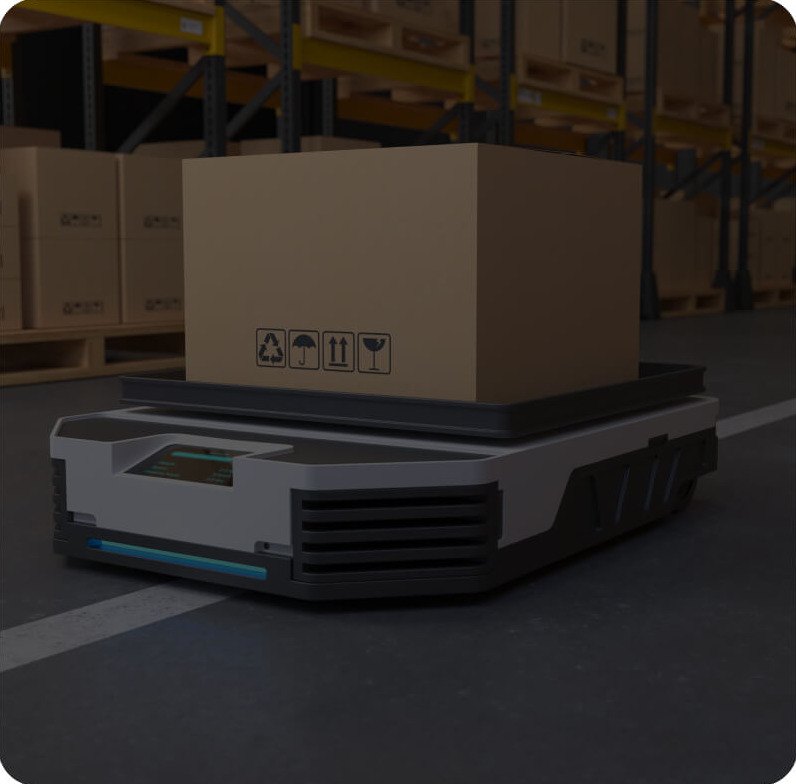
Mobility
Support for high-resolution sensors in conjunction with a DRAM-less eWarp pipeline allows for low-latency processing of wide FoV cameras for applications such as drones and 360-deg cameras.
New Blog
Discrete ISP vs. SoC-Integrated ISP in Automotive ECUs – A Comparative Study
In automotive vision-based applications like ADAS and automated driving features, the choice of ISP architecture when designing ECUs can make or break system performance. Should you go with a discrete ISP for maximum flexibility, advanced image processing, and lower latency, or an SoC integrated-ISP for efficiency, compactness, and simplified design? Each path carries trade-offs in system performance, image quality, power, cost, and scalability.
In our latest blog, we break down the advantages of both discrete ISPs and SoC-Integrated ISPs and the challenges designers face when selecting the optimum ISP architecture.
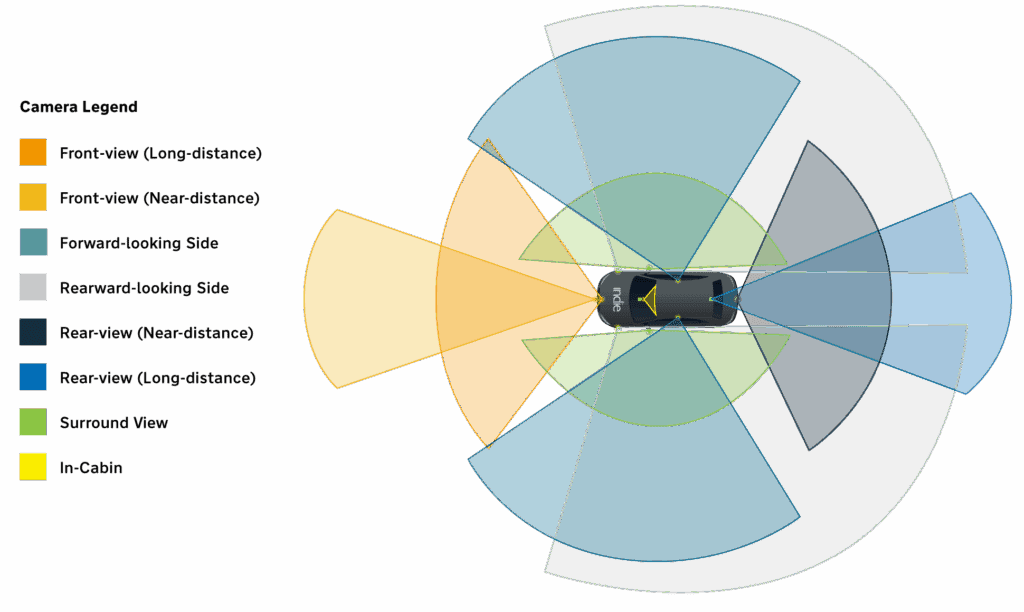
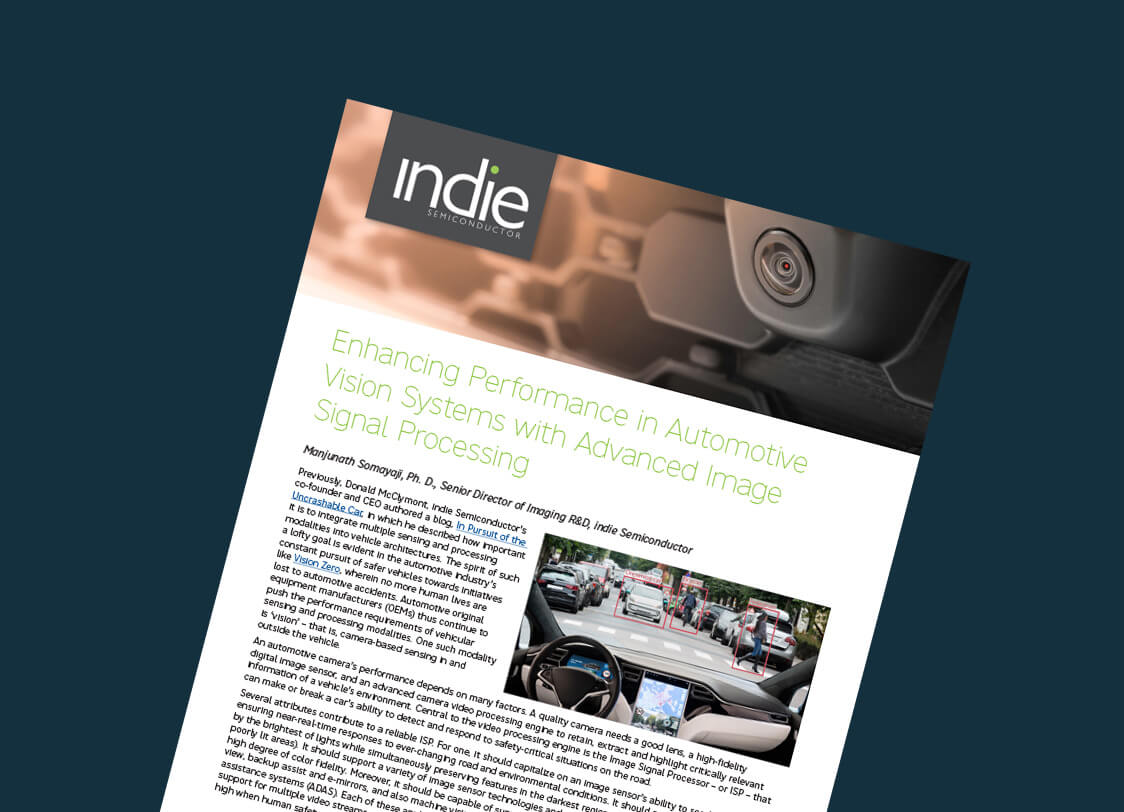
Enhancing Performance in Automotive Vision Systems with Advanced ISP
The latest advancements in Image Signal Processor (ISP) technology are engineered to expand high dynamic range imaging, support advanced color filter arrays for accurate color representation and low light performance, and improve the effectiveness of Advanced Driver Assistance Systems (ADAS). These processors are transforming how vehicles “see” and interpret their surroundings. Learn more about indie’s advanced CVPs in our latest whitepaper.











